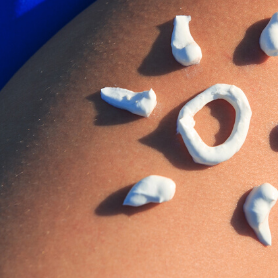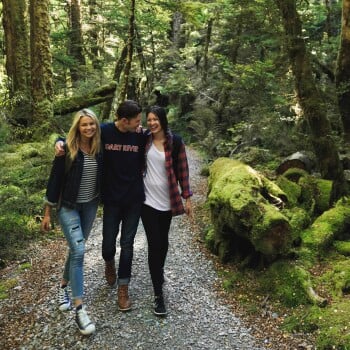- About Us
-
Trips
-
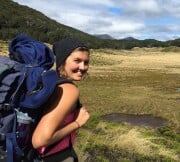 Kiwi-Style Hiking
Kiwi-Style Hiking
-
 Great Walks
Great Walks
-
 Hiking Tours
Hiking Tours
-
Alpine Hikes
-
Custom Groups
- Huayhuash Trek
- Family Northern Explorer
- Family Southern Explorer
- Lake Waikaremoana Hike
- Women's Custom Tours
- Women's Southern Wilderness
- Coast, Canyons and Mountains
- Coastal Wanderer Custom Tour
- Don't Cross the Ladies
- Secret South Custom Tour
- Tekapo Hike
- West Coast Custom Tour
- World Heritage Custom Tour
-
- Blog
- Shortlist
- About Us
- Trips
- Blog
- Shortlist

May 15, 2018
Four Strange NZ Flora and Fauna You’ve Probably Never Heard Of
New Zealand is famous for its diversity of stunning landscapes. Less well-known is its unique plant and animal life. You may have heard of a few of its iconic species - the national bird, the kiwi, of course, and perhaps the giant Kauri tree, whose immensity rivals that of the Californian Sequoia. Many of the country’s more interesting plants and animals fly under the radar a bit, though. The country has no native land mammals save for a couple of species of bat (pekapeka) so you have to look a little lower down the food chain to find some of its most unusual inhabitants. Just because they might be a bit smaller and harder to spot, though, doesn’t make them any less fascinating.
Kauri Snail
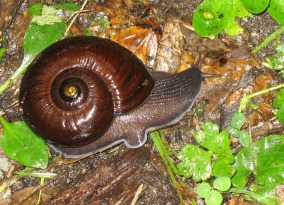
Actually, not many people would describe this creature as small. The Kauri Snail/pupurangi has a shell about 80mm in diameter—that’s about the size of a man’s fist! It’s found in the Waitakere Ranges west of Auckland and the forests of Northland. It’s carnivorous and cannibalistic—that’s right, these snails sometimes eat each other. The ones that don’t become dinner may live twenty years feeding mostly on worms and other insects. They’re mainly active at night, so you might see one on the hunt if you’re doing a night bushwalk in the right area. They’re quite a sight to behold—when mobile, the snail’s body can extend out of its shell by a good 100 millimetres!
Mountain Buttercup
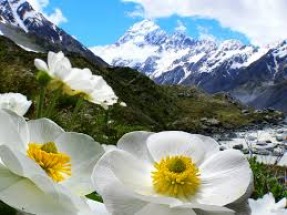
Less carnivorous but no less remarkable to encounter in its native environment is Ranunculus Insignis, aka the mountain buttercup or hairy alpine buttercup. This is a large native buttercup that grows up to a metre high and, as its name would suggest, flourishes in Aotearoa’s mountain habitats in both the North and South Islands. One of the most stunning places to see it is Tongariro National Park on the volcanic plateau in the central North Island.In the late spring/early summer, the alpine landscape, normally dominated by hardy grasses and tussock amidst the black scoria, is blanketed by blooming yellow buttercups to create a wonderful alpine wildflower scene.
Mountain Pineapple Tree
Another notable alpine species is the neinei, sometimes called the mountain pineapple tree. These grow mainly in the South Island in subalpine forests. Their gnarled and twisting branches terminate in large bunches of long curvy leaves giving them a Dr Seussian look. In addition to their unusual appearance, the neinei (Dracophyllum traversii) have the distinction of being the longest-lived small indigenous tree, able to live at least 500 years. They also boast one of the smallest seeds of any tree in New Zealand - and despite an individual tree being able to generate 750,000 seeds - seedlings are rare. Despite this, the tree’s longevity means the neinei is still fairly common, so look out for them next time you’re in the mountains of the South Island.
Sandflies
New Zealand is often favourably compared with Australia for its lack of nasty critters. Snakes, poisonous spiders, box jellyfish, crocodiles--Aotearoa is largely free of anything more savage than a grumpy seal. But trampers, campers and other lovers of wilderness should be prepared to come into contact with one small but extremely unpleasant creature--the sandfly. These tiny black flies occur in profusion in parts of the country, notably on the South Island’s West Coast and particularly Fiordland. Unprepared visitors--that is, those who haven’t covered themselves with DEET--can have their enjoyment of this region’s spectacular scenery severely curtailed if they come into contact with a swarm of sandflies and find themselves covered in dozens of bites. For those not used to such attacks, red itchy welts can follow, making for a few uncomfortable days. The redoubtable James Cook documented this in 1773, writing in his journal, “Wherever they light they cause a swelling and such intolerable itching that it is not possible to refrain from scratching and at last ends in ulcers like the small pox.”

These are just some of the unexpected delights (well, not the sandflies) you’ll find when you explore New Zealand’s wilderness. Contact us today for help in putting together your perfect New Zealand holiday. And, don’t forget the DEET!

